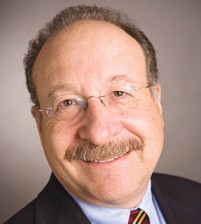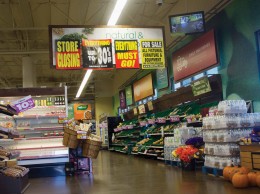Dubroff: It’s no easy task to put a fresh face on a spectacular retail disaster
IN THIS ARTICLE
- Columns Topic
- Henry Dubroff Author
By Henry Dubroff Friday, March 27th, 2015

Henry Dubroff
For former owner Tesco, Fresh & Easy wasn’t particularly fresh or easy.
Produce wrapped in plastic and pre-packaged foods that didn’t click with middle class consumers left a bad taste in the mouths of shoppers. And the no-service attitude of the British food giant meant none of the easy banter that accompanies a trip to Trader Joe’s.
Tesco unceremoniously dumped Fresh & Easy in 2013 after a $2 billion spending spree that ended up in failure. The company went into bankruptcy and is now owned by Los Angeles billionaire Ron Burkle’s Yucaipa Cos.
Yucaipa said March 23 it was closing 30 of the stores and reformatting others into a neater and tighter package. Among those that will close are three stores along the Highway 101 corridor that did not fit into the new game plan.
Yucaipa’s vision for Fresh & Easy 2.0 includes remodeled stores with a streamlined look that are designed by the same firm that produced the Apple retail experience. And the company has rolled out what it calls fresher fare.
Yucaipa, which owns the Wild Oats name, has introduced some Wild Oats branded products into the new Fresh & Easy stores. It has rebranded one Fresh & Easy store as Wild Oats, a throwback to the Boulder, Colorado-based chain that’s now part of Whole Foods.
The lessons of the Fresh & Easy fiasco include the fact that some of the best minds in finance were humbled by Tesco’s stumbles in California and elsewhere. Last fall, legendary investor Warren Buffett disclosed that he’d sold off a big chunk of his Tesco shares after calling the investment a “huge mistake.”
• Tesco’s timing was terrible all the way around. The company studied the California market for years, perhaps missing a window of opportunity, and then took a big plunge in 2007 just as the real estate bubble was bursting. Lesson No. 1 — timing still matters in business, in love and in life.
• You had better live up to your brand. Fresh & Easy was a catchy moniker, but walking through stores in Santa Barbara and Moorpark, I encountered the exact opposite of what Tesco offered shoppers as an experience. It was a store designed by committee — not quite a warehouse, not a discount store and not as convenient as, big gulp here, a Circle K or 7-11.
• In America in the 21st Century, you need to be aspirational. Specialized stores such as Trader Joe’s or Whole Foods are not just selling products. They are selling a lifestyle and encouraging you to come back over and over again. Which is why college students, bank presidents and even a few celebrities frequent the Trader Joe’s on Milpas Street where I am a regular. Tesco never got that concept.
Finally, there is a strategic repositioning going on in the grocery business that Tesco totally missed.
The whole industry is moving from multiple players who compete for market share at low margins to an oligarchy of dominant players and very specialized niche stores. That’s part of what’s driving the merger of Kraft and Heinz, announced just as this newspaper was going to press.
With the Albertsons-Safeway merger moving along, only the very largest suppliers will survive. Meanwhile, Whole Foods, and Trader Joe’s dominate their market segments as new players such as Haggen’s try to carve out a niche.
The opportunity for Fresh & Easy 2.0 will be dramatically different from what Tesco envisioned in the pre-recession era. But as that legendary retail analyst Yogi Berra once said, “It’s hard to make predictions, especially about the future.”












